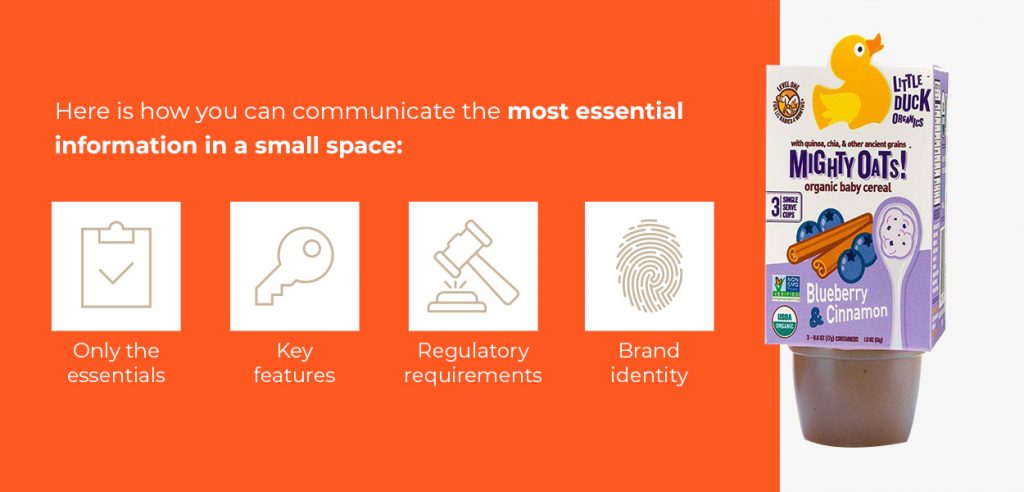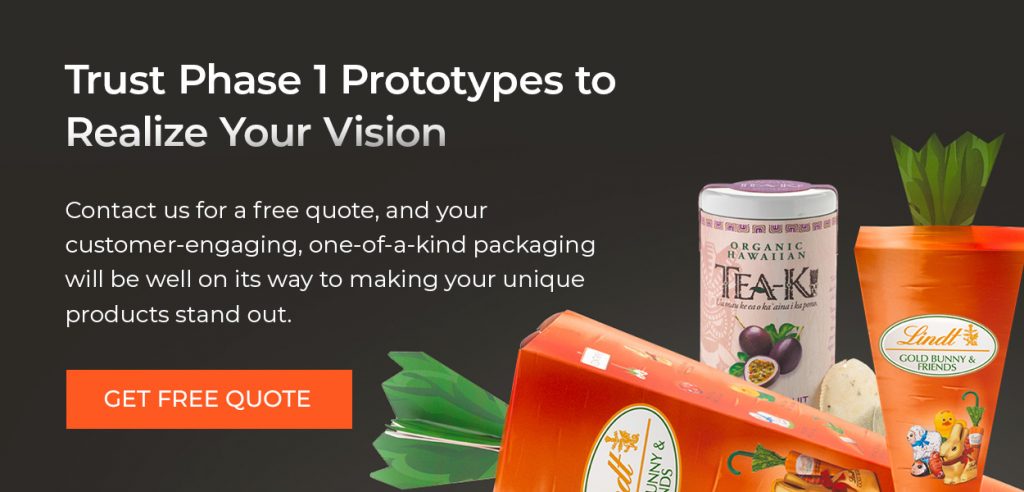The 6 Best Tips for Writing Product Packaging Descriptions
By: phase1Product packaging offers a powerful tool to catch attention and communicate value, and descriptions are an essential part of packaging. Product packaging descriptions are pivotal in influencing consumer perceptions, whether you sell your products in a brick-and-mortar store or online. If you are introducing a new product or giving existing products a fresh look, honing the skill of writing compelling descriptions is essential.
Explore these useful tips on how to get your packaging brief right. Learn to differentiate your brand by highlighting key features and using words that resonate with your target audience.
1. Pull in Customers With Memorable Headlines
An effective headline reels the customer in to learn more. It is more than the first piece of writing the customer reads — if you play your cards wrong, it might also be the only one. Ask yourself what will convince people to stop and read your packaging descriptions, especially if they are in a hurry.
Innovative marketing tools and the right packaging design can certainly help, but your writing itself needs to be precise — especially your headings. Because of the limited amount of space on product packaging, you need to create a short hook that communicates your message and makes the reader see the value in your product instantly.
How Descriptive Should You Be?
Writing packaging copy differs from other types of sales copy thanks to its unique format. When a product is on a shelf at a retail establishment, for example, only the front panel of the package is visible. So, the only things a reader might see upon first glance will be your product name and a couple of select selling points that are important enough to include on the front. You want a consumer to pull your product off the shelf and turn it over to learn more. Here is how you can communicate the most essential information in a small space:

- Only the essentials: Only provide enough information to allow consumers to quickly understand what the product is and what sets it apart.
- Key features: Highlight only the most important product features like unique selling points, special ingredients or notable functionalities. Any secondary features can be listed on the side or back panels, but the theme of brevity should be prevalent throughout your product packaging descriptions.
- Regulatory requirements: Ensure compliance with rules and regulations for the specific product’s labeling. This information may include vital legal or safety packaging details and is especially prevalent in the food packaging industry.
- Brand identity: Emphasize your brand identity to encourage consumers to explore your offering further.
2. Use the Right Sentence Structure
The purpose of a product description is to inspire your readers to give your product a shot by sharing how it can solve specific problems. Successfully communicating this message comes down to a few notable pieces of copywriting advice:
- Keep it short and sweet: Many of the most successful advertising campaigns only need a few words to become sensational. In this sense, the limitations on the space for your packaging copy may work in your favor to ensure that your copy stays brief and simple.
- Be clear: In any form of communication, use words that are easy to understand and identify concepts most people can relate to within your packaging copy. This clarity helps the consumer focus on your product instead of confusing jargon or grammar.
- Format your copy: Use bolded or colorful text and italics or quotations to highlight the benefits your customers can expect from your product. Avoid wordiness by using bulleted or numbered lists to convey your product information. Get creative with your bullets by using checkmarks, your logo or other brand-specific icons.
Using these packaging copy tips will help your readers grasp your message within a matter of seconds and prompt them to respond positively by taking your product along to the checkout counter.
3. Include the Right Content
Along with the right format, your copy should be composed of the right content. Essential elements you will want to include while writing packaging copy are:
- Product name: Put the name of your product in prominent locations all over your packaging and throughout your product packaging copy. Use your full brand and product names any time you refer to either within product description of packaging, which will help your reader remember you down the line.
- Product description: The front panel of your packaging should display a common name for your product in addition to the fun name that you picked for it. This information clarifies the product name and exactly what it does.
- Unique selling points: Go beyond the first-glance benefits of your product and envision what your customers are really gaining when they purchase it. People may not be able to literally buy better cooking skills or a full night’s sleep, but if your product can help them achieve those things, then make it part of your copy strategy.
- Other relevant products: Once your customer goes home with your product, you want to give them a chance to remember what other products you offer in case they absolutely love their experience and are eager for more. Your packaging can help you continue selling different flavors or varieties days after the buyer has left the store, so have a place in your copy to list similar items for your customer to enjoy.
- A call to action: Toward the bottom of your copy, give your readers a chance to learn more by listing your brand URL and a quick prompt for them to visit and discover new information.
Continue to be concise with how you incorporate each of these factors into your sales copy, and strive to communicate your brand’s ambitions through the packaging content. One way to be more personable and relatable is to use your packaging copy as an opportunity to tell a story, one which will spur your readers to act.
4. Tell a Story
Give your customers a framework to imagine themselves using your product. If your product is highly innovative and unique, this storytelling may be the best way to succeed, as you will have to reorient your audience’s way of thinking to a greater extent. You can also add a unique backstory that the customer will find endearing to add more character and engage with the audience.
It is as though you are doing the math and putting the pieces together for your customer, relieving them of the duty to figure it out on their own. The less work you force on them, the better. And since few brands take this sort of provision seriously, going through the storytelling and picture-painting process will make your products stand out. Here are some styles you may consider in creating your brand and product story framework:
- Add humor: People appreciate a good laugh, and they will be drawn to products and copy that identify an everyday need and address it in a lighthearted way.
- Be straightforward: Conversely, some brands take a no-nonsense, no-frills approach to their storytelling to contrast the hype-oriented narrative prevalent in sales copy. Certain audiences will be more willing to appreciate and trust straightforward product information and will, therefore, be much more confident in using those brands.
- Personalize copy: Another approach in storytelling is writing from a personal perspective, narrating your brand’s beginnings with a focus on authenticity and artisanal, organic progress. These narratives combine an introduction to the problem with a personal spin on product information. Because of its engaging nature, these packaging copy stories are effective in drawing in customers.
No matter the genre of storytelling or the focus of your brand, if you depict how your product can solve a problem for your customer while providing the logic behind it, you will be likely to draw in crowds of excited product users. You can use this opportunity to boast about your product and your expertise and share some testimonials or product reviews.
There is one additional key factor in the success level of your storytelling — the main character. If you think it is you as the product inventor, think again.
5. Make Your Customer the Hero
When telling your story on your product packaging, keep your focus on the hero of your product story: the customer. Your audience should imagine themselves succeeding at solving their problem with the help of your product. Here are some tips on using your packaging copy and product descriptions to empower your customers:
- Put yourself in the customer’s shoes: Create an ideal customer template or a strengths, weaknesses, opportunities and threats (SWOT) analysis. Use the data you come up with to create copy that shows just how your product can help address the places where your ideal customer is struggling. Your readers are in a hurry and are relying on their impulses to make decisions — you need to understand their way of thinking and use pain points they identify with.
- Do the work for your customer: It is essential that you use language that is easy to understand and identifies uses for your product explicitly. This way, your customers can just follow your lead. Act as a guide in your customer’s journey, providing them with clear usage information, recipe suggestions and other resources they need. Your customers deserve the best, so give them the most significant advantages and the lowest amount of work and thinking to get there.
- Understand the importance of your brand’s first impression: Just like when we meet someone new, human brains have initial reactions when they are introduced to a new company or product. You want them to have a sense from the start that you and your product are on their side.
This empowerment lets them see themselves as the protagonist in your product narrative. Thanks to your product, you become a helpful tool for your customers, and they, in turn, become a resource for you and your brand to make a difference in people’s lives. Your copywriting can depict the different elements of this journey and pull in a growing purchaser base.
6. Use Helpful Tools and Resources
Finally, get the best tools at your disposal to create well-rounded, reliable and correct written content. You can always hire an editor or bring a freelance copywriter on board, but there may be other resources available for you online. Here are a few examples of tools you can use to improve the quality of your product description writing:
- Proofreading and grammar checks: Use online checkers like Grammarly or Grammarix for proofreading your copy for correct vocabulary and grammar techniques.
- Writing tips: Check out Via Writing and My Writing Way for useful writing guides and writing tips.
- Simplify citations: Cite This For Me can help you create citations and sources.
- Use the right words: Google Dictionary or the Merriam-Webster website are excellent for finding definitions and synonyms to keep your writing fresh.
There are numerous possibilities for finding web-based resources and writing applications to help you write solid packaging copy. Using short paragraphs of prose and creative bulleted lists for specs will help you in writing product descriptions that work. Also, keep in mind that showing, not telling, is a key strategy. Write enough to attract attention and share valuable information, but let imagery help, too.
Trust Phase 1 Prototypes to Realize Your Vision
Once you have your copy written and your packaging designs completed, there is one more resource you should definitely check out — the packaging solutions here at Phase 1 Prototypes. From the minute we have final approval, we can get your products to you in three days or less. Are you ready to have your products flying off the shelf? Contact us for a free quote, and your customer-engaging, one-of-a-kind packaging will be well on its way to making your unique products stand out.


Leave a Reply